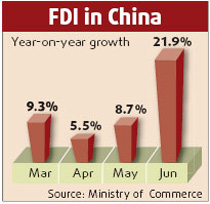Luxottica, the world's biggest eyeware maker, is hoping its 700 new outlets planned for Hong Kong and the mainland will catch consumers' eyes.
The Italian company's chief executive said it's banking on strong demand in the fast-growing economy.
At 500,000 yuan per store - trading under LensCrafters or Liangshidian - the total investment will be about 350 million yuan over the next five years.
The 700 stores will join the company's 266 existing outlets in Hong Kong and on the mainland.
George Minakakis, chief executive of Luxottica Retail Great China, said sales on the mainland and in Hong Kong could reach $147 million in 2008, up from its 2007 target of $97 million.
"We want the name of Liangshidian to jump into the minds of Chinese whenever they think about glasses," Minakakis said. "We want to make Liangshidian the name in glasses on the mainland."
"We will make it happen within a year through promotions."
The group introduced the LensCrafters brand to its Chinese stores in 2006, selling its house brands of eyewear as well as luxury brands such as Bulgari, Versace and Polo Ralph Lauren.
All LensCrafters outlets are located in first-tier cities, and each pair of glasses is priced at about 1,500 to 2,000 yuan. The company targets high-income professionals aged between 25 and 40.
Luxottica sees great potential on the mainland, as glasses become an indispensable fashion item for a growing number of wealthy consumers.
As consumers become more conscious of fashion eyewear and seasonal changes in optical products, the number of spectacles owned per wearer is expected to increase, fueling market growth on the mainland.
The mainland market is growing at an annual rate of 10 percent, with demand at 50 million pairs and sales totaling 20 billion yuan. Industry insiders believe easy access and market space have created fierce competition among domestic and international investors in the eyeware market.
Taiwan's largest eyewear retailer Baodao Optical has 1,125 mainland stores and plans to increase that to 3,000 by 2010.
The family-run group first came to the mainland in 1997, when it sold eyewear products priced at 100 to 2,000 yuan.
Statistics show the mainland has the world's largest potential consumer base for optical products. More than 90 percent of its elderly and middle-aged population needs to wear glasses and of the more than 20 million high school and university students, at least 80 percent need glasses.
(China Daily February 19, 2008)


